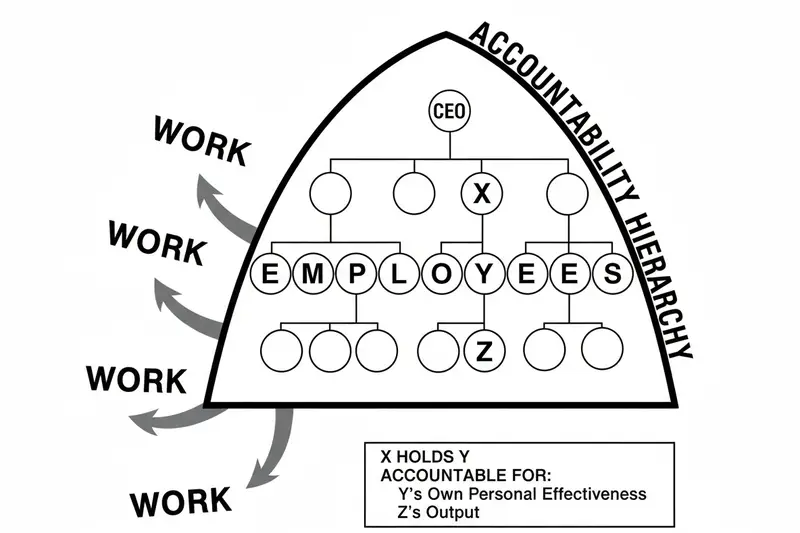The OKR Edge: Radical Goals, Razor-Sharp Focus
OKR
The OKR Edge: Radical Goals, Razor-Sharp Focus
Discover the six pillars of OKRs—change, focus, motivation, SMART metrics, cross-team alignment, and open progress tracking—and learn why less truly is more when it comes to breakthrough performance.

Contributor:
Сергей Владимирович Тихончук
3 months ago
OKR methodology is built to turn bold visions into tangible progress. It’s not a gentle performance tweak or a mild process improvement—OKRs demand you rethink what’s possible. By setting ambitious Objectives and quantifiable Key Results, teams embrace a framework designed to challenge the status quo and cultivate a culture where aiming high becomes second nature.
At its core, an OKR is about change—often radical change. If your goal is simply to maintain current performance, you don’t need OKRs. They’re for organizations that want to break molds, not for those fine-tuning an already perfect routine. Embracing OKRs means accepting that comfort zones are the first barriers to real innovation.
Focus is another guiding principle of OKRs, but not in the way you might expect. It’s less about what new tasks you’ll add and more about what you’ll stop doing. Every Objective forces you to prune low-value activities, freeing up time and resources for the few initiatives that truly drive your mission forward.
OKRs are inherently social. Crafting and sharing Objectives and Key Results invites the entire team into a shared narrative. When people see how their daily contributions map to a larger goal, motivation and engagement surge. This collective buy-in turns individual to-dos into coordinated steps on a unified path.
Adding Key Results to a Goal allows the goal itself to be short, simple, and inspiring, while the KRs follow the SMART criteria (Specific, Measurable, Achievable, Relevant, and Time-bound) and describe the criteria for achieving the goal. A good example is the Google Chrome team. Their goal wasn’t a dry production plan like “Reach 20 million weekly active users by year-end.” Instead, they stated: “Create the best web browser in the world.” This simple and motivating motto focused the team’s energy on a shared vision without burdening it with dull metrics, while the Key Result “20 million weekly active users by the end of 2008” fully aligned with SMART criteria. A crisp Goal statement paired with clear, rigorous KRs helps teams stay inspired and accountable at the same time.
Stretch is built into the OKR philosophy. You aren’t aiming for a safe, 100% completion rate on every Key Result; you’re shooting for a moonshot. Hitting 70–80% of a wildly ambitious target is treated as a home run, whereas 100% on a modest goal might feel like coasting. Like Columbus, who set sail to find India but discovered a New World, OKRs ask you to venture beyond familiar maps.
After setting a strategic Objective, leaders empower teams to propose how they’ll get there. This bottom-up approach creates a goal tree: the strategic Objective at the crown, tactical initiatives in the middle, and operational tasks at the roots. When everyone understands where their branch fits, execution turns into a coordinated climb toward the same summit.
Cross-functional alignment is key to avoid silos. Marketing’s launch campaign OKRs, Engineering’s performance-tuning OKRs, and Sales’s adoption-growth OKRs should all map back to the same top-line Objective. This creates natural dependencies, ensures resources flow where needed, and fosters collaboration across departments.
OKR methodology also insists on limiting the number of Objectives per cycle. One headline Objective is ideal; two or three can work at most. Any more, and your team’s attention splinters. By forcing yourself to identify just a couple of priority goals, you guarantee that energy and resources concentrate where they matter most.
Transparency and communication seal the deal. OKRs live on public dashboards or shared documents so that progress, setbacks, and pivots are visible to all. This openness fuels accountability and sustains motivation—no one stays inspired by hidden metrics or secret targets.
To recap, OKRs combine radical change, ruthless focus, and shared motivation with six core elements: a simple Objective, SMART Key Results, ambitious stretch targets, a bottom-up goal tree, a limited number of Objectives, and full transparency. Stick to these principles, and OKRs will ignite continuous innovation rather than just manage performance.


